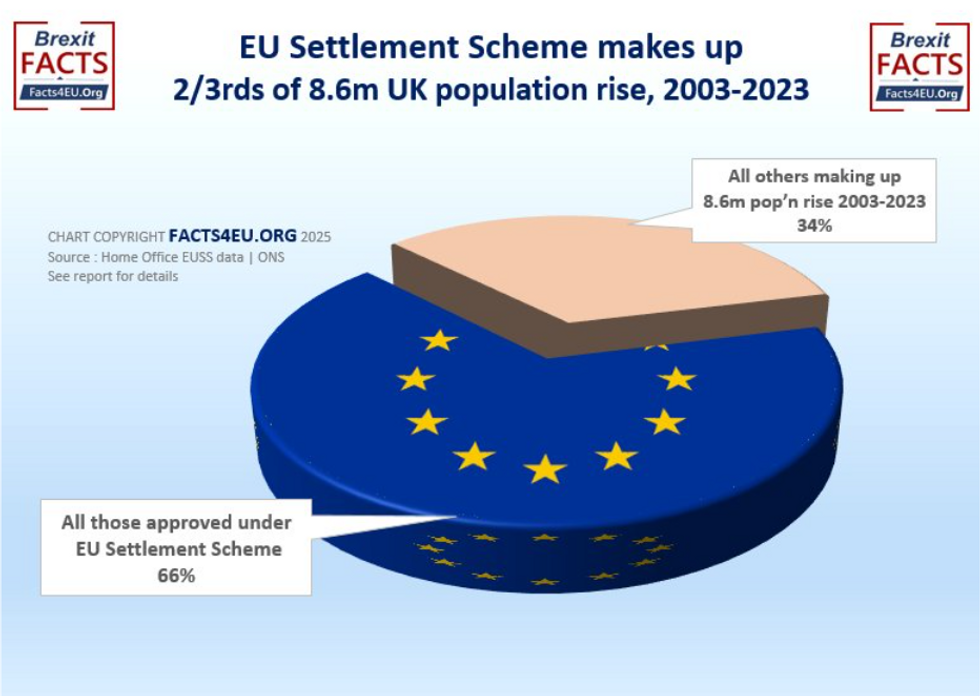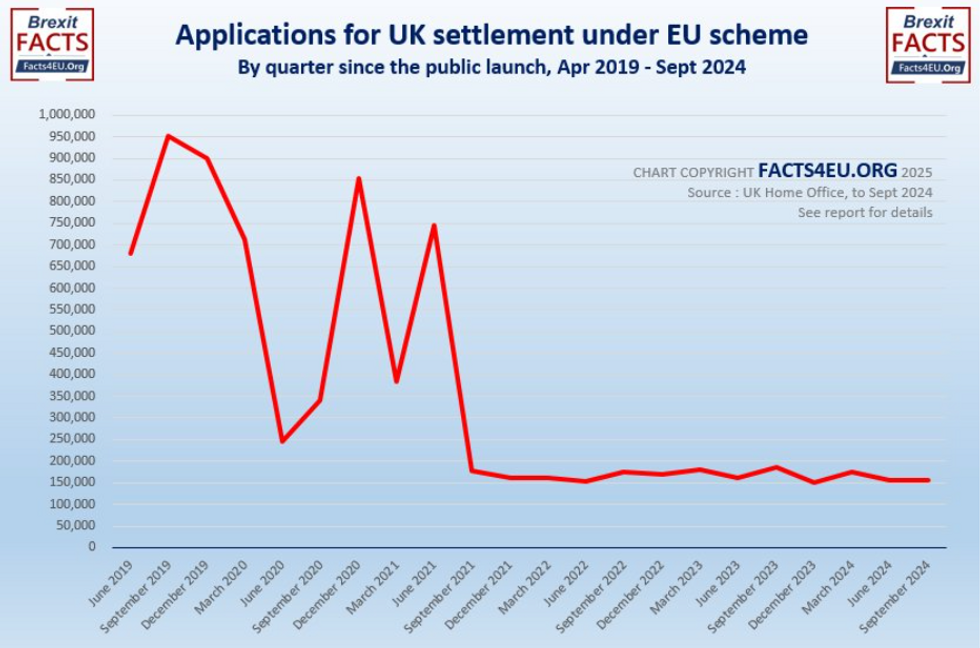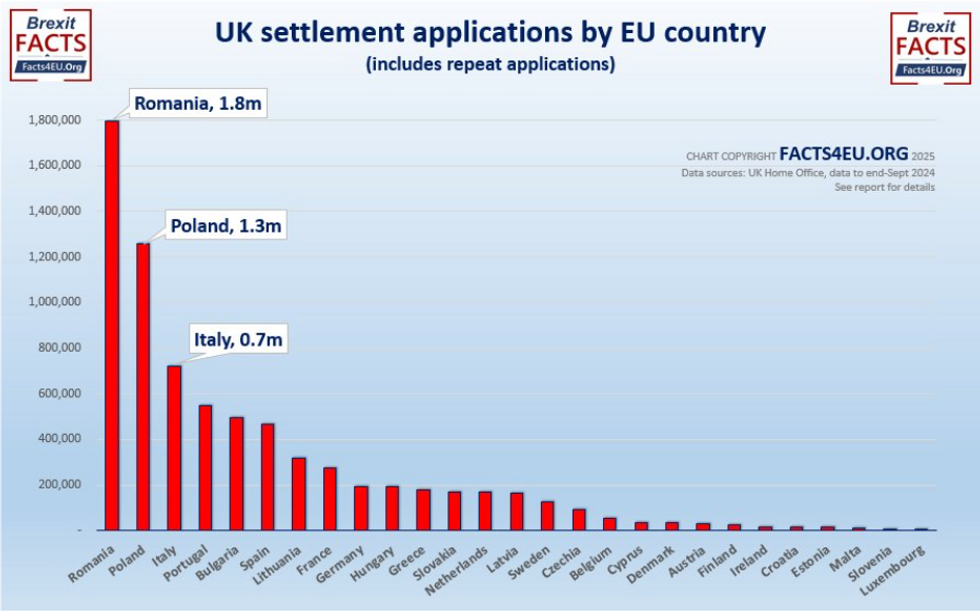'The economic case for mass immigration is falling apart' - Matt Goodwin
GBN
Home Office figures show EU membership was biggest factor in Britain’s population boom
Don't Miss
Most Read
Trending on GB News
Britain’s EU membership has been the single biggest factor in its population boom since 2003, analysis by Facts4EU and GB News has revealed.
Between 2003 and 2023, the UK’s population swelled by 8.6 million people, a rise of 14.5 per cent, or nearly one-seventh.
In a blow to remainers, two thirds of this boom came from EU immigration, much of it through the EU Settlement Scheme which the UK had to abide by during its time in the bloc.

Two thirds of Britain's population boom has come from the EU (2003-2023)
Facts4EU
Home Office data reveals a staggering 8,213,323 applications were made under the scheme, placing a great strain on the Home Office.
That’s the equivalent to the entire population of London submitting an application to the Home Office.
Indeed, 2.5 million applications were received in the first nine months of the scheme launching, meaning 13,000 claims were processed per working day.

Applications for UK settlement under EU scheme
Facts4EU
Analysis of the data reveals the countries with the largest number of settlement claims were Romania (1.8million), Poland (1.3million) and Italy (0.7million).
These three countries made up a whopping 51 per cent of applications. If you include Portugal and Bulgaria (fourth and fifth with 0.55 and 0.5million respectively) that figure jumps to 65 per cent.

UK settlement by EU country
Facts4EU
For immigration sceptics, this data reveals how EU membership came at a heavy price, specifically a booming population despite falling birth rates.
However, since Britain left the EU and the scheme ended, EU immigration has been more than replaced by non-EU immigration, spiking Britain’s population.
Last year, EU net migration to Britain hit –95,000, down from a high of +300,000 in 2016.
But non-EU net migration hit +845,000, up from an average of about +50,000 between 2012 and 2017.
It means that despite leaving the EU and cracking down on things like student visas, Britain’s population in still growing rapidly.
Nevertheless, the Home Office data still reveals how Britain’s EU membership was driving population growth, adding strain to the NHS, schools and other public services.
A Home Office spokesperson said: “The rapid processing of millions of EU Settlement Scheme applications is just one example of the hard work carried out by our staff every day.”
LATEST FROM MEMBERSHIP:

‘Great news for immigrants!’ MPs have slammed Starmer over Labour’s immigration plan
PAIt comes after the ONS released staggering population projections for the UK in January.
The independent body projected Britain’s population to reach 72.5million by 2032- a rise of 5million- fuelled entirely by migration and not by births outstripping deaths.
That would see the UK’s population outstrip France’s for the first time since 1997, according to Eurostat’s projection for the French population.
The data shows a growth rate of 7.3 per cent, marginally higher than the 6.1 per cent growth in the previous decade.
Reacting, the Prime Minister’s spokesperson said: “We’re going to publish a white paper to set out a comprehensive plan to end these staggeringly high migration numbers.
“As the prime minister has previously said, we had a supposed cap in place before and it didn’t have any meaningful impact on reducing immigration.
“So he doesn’t think that setting an arbitrary cap, as previous governments have done, is the best way forward in terms of significantly reducing migration.”
The ONS stressed the figures are projections - not predictions or forecasts - and warned that real numbers could be higher or lower than suggested.







